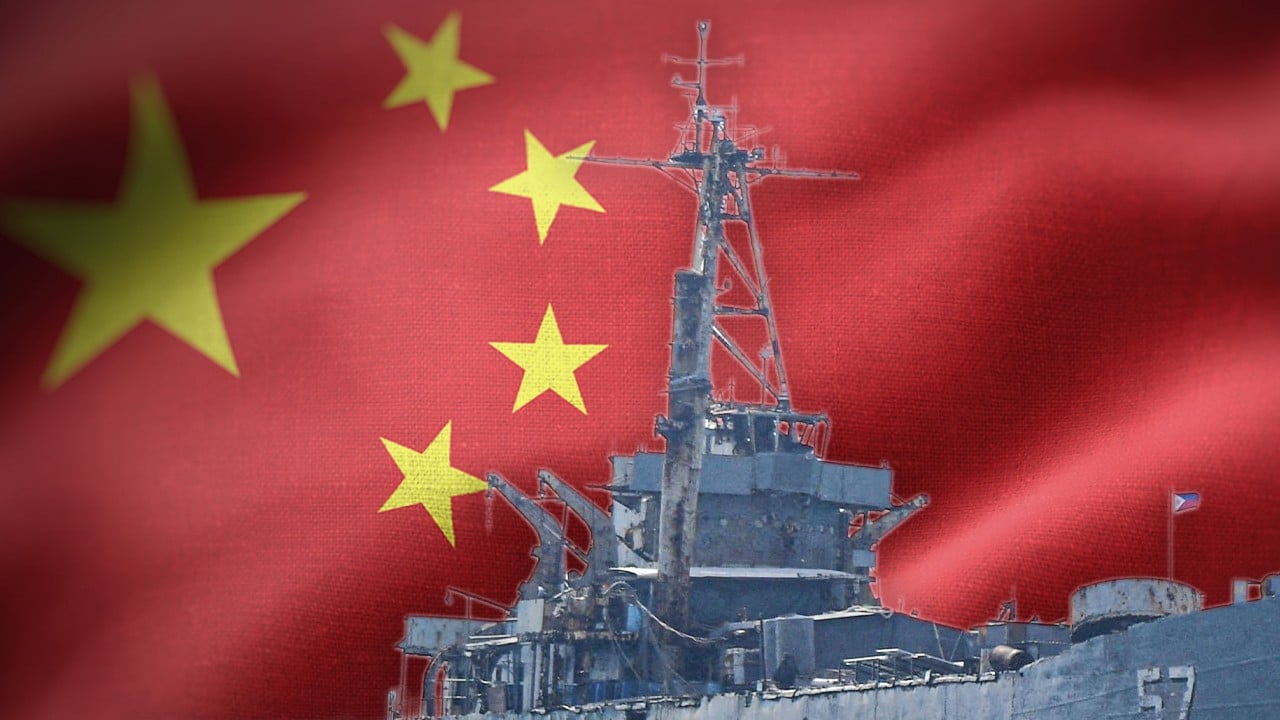China justified its action on Saturday by saying the PAF aircraft had “illegally” entered the airspace of Huangyan Dao, the Chinese name for the Scarborough Shoal in the West Philippine Sea, Manila’s term for the waters of the South China Sea that lie within its exclusive economic zone.
In a statement on Sunday, President Ferdinand Marcos Jnr denounced China’s action describing it as “unjustified, illegal and reckless”.

It was the first reported incident involving the PLA Air Force disrupting a PAF operation since Marcos assumed office in June 2022.
Marcos’s military chief, General Romeo Brawner Jnr, also condemned the incident, saying it had endangered the lives of PAF personnel.
Filipino defence analyst Vincent Kyle Parada, a researcher at the S. Rajaratnam School of International Studies in Singapore, told This Week in Asia that the PLA Air Force’s deployment of flares was a deliberate, wilful, and provocative action but not one meant to produce lethal results.
“If the incident did result in loss of life on the part of Filipino personnel, it’s certain that the US would mount some type of military response or show of strength in the South China Sea in accordance with MDT,” Parada said.
“But whether it leads to active warfare is entirely dependent on Manila. Obviously, China and the Philippines are rational actors – they want to avoid a war. The MDT serves the country’s interest best as a deterrent. It’s there specifically to ensure we do not reach a point in which armed conflict seems inevitable. If Manila invokes it soon and Beijing does not back down, then it loses a big part of the MDT’s advantage,” he explained.
Grey zone in the sky
Abdul Rahman Yaacob, a research fellow with the Southeast Asia programme of the Lowy Institute think tank, told This Week in Asia that Manila should anticipate similar actions by the PLA Air Force in the future.
“What we can expect is for the Chinese to employ grey zone tactics in the air,” he said, referring to tactics aimed at asserting dominance without crossing the threshold into open warfare. “The main objective is to curtail the Philippines’ military activities in the air domain and to exert dominance control in the contested area of the South China Sea.”
China has frequently been accused of using grey zone tactics, such as firing water cannons and high-intensity laser at Philippine vessels, as a major component of its strategy to gain control of the South China Sea.

The agreement, the details of which have not been made public, reportedly outline the terms under which the Philippines can carry out such missions with China’s approval.
Despite that, Parada said China still has a vested interest in disrupting Philippine operations in the South China Sea.
“As it pulls back on grey zone tactics at sea, it could very well start employing those same tactics in the air. It’s a shift in China’s approach that the Philippines should be prepared for,” Parada explained.
“Risks increase exponentially at thousands of feet in the air compared to a ship. Like China, there needs to be a fundamental shift in our response in the West Philippine Sea. That means establishing clear rules of engagement that mitigate ambiguity during these confrontations, while at the same time, empowering personnel in the field to be capable of independent action to ensure their safety,” he added.
The incident at Scarborough Shoal occurred days after the Philippines conducted maritime patrol and air drills with US, Australian and Canadian forces under the auspices of the United States Pacific Air Forces (PACAF) in the West Philippine Sea.
In October 2023, the Philippines complained that one of their navy patrol ships had been tracked by Chinese air and naval forces near the Scarborough Shoal. A PLA Air Force spokesperson said the ship had trespassed into Chinese waters and was “tracked, monitored, warned and restricted” for seriously violating “China’s sovereignty and international law”.
In 2012, Beijing seized the shoal, a traditional fishing ground within the 200-nautical-mile exclusive economic zone of the Philippines, after a two-month stand-off with the Philippine Navy.
In 2016, a UN arbitration court ruled in favour of the Philippines’ territorial claims in the South China Sea, finding that China’s assertion of historic and economic rights over most of the maritime region, including the Scarborough Shoal, has no legal basis. China has rejected the ruling as illegitimate.
Projecting air power
Parada said that for decades, the Armed Forces of the Philippines had primarily focused on being an army-centric institution, specialising in counter-insurgency, counterterrorism, and jungle warfare, with the result being that its air force and navy have lagged behind many of its contemporaries in Southeast Asia.
“The shift to air power is definitely a cause for concern for the Philippines. While efforts have been underway to boost the capabilities of these major services, the PAF has less than 30 combat aircraft currently in service. The vast majority of its assets are dated – trainer, utility, or reconnaissance aircraft that go as far back as the early days of the Cold War,” he said.
Joshua Espeña, a resident fellow and vice-president of the International Development and Security Cooperation, said that China will continue to employ all domains of warfare to intimidate the Philippines even as Manila modernises its air and naval forces.
“We can see this similarly with Taiwan’s experience with the PLA Air Force’s almost daily incursions. So, it is apt to know those lessons for the Filipino context,” he said. “As the Philippines projects its increasing air power to garner international support, so does China negate it by immediately testing those toys through intimidation.
Espeña said “the threat of force is useful on the Chinese side to enforce their interpretation of diplomatic deals with the Philippines. To be clear, there is no pivot to the air, but a Chinese parry to what Filipino forces are trying to project.”


